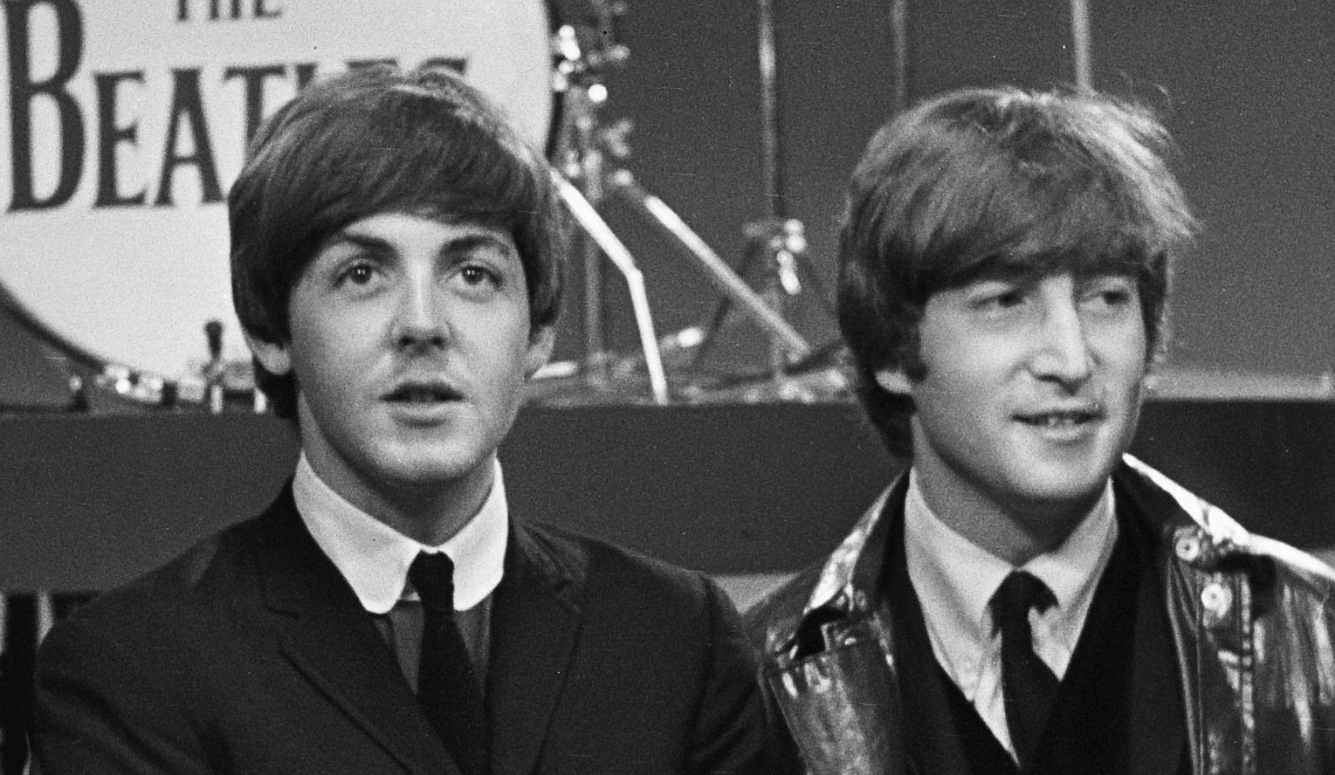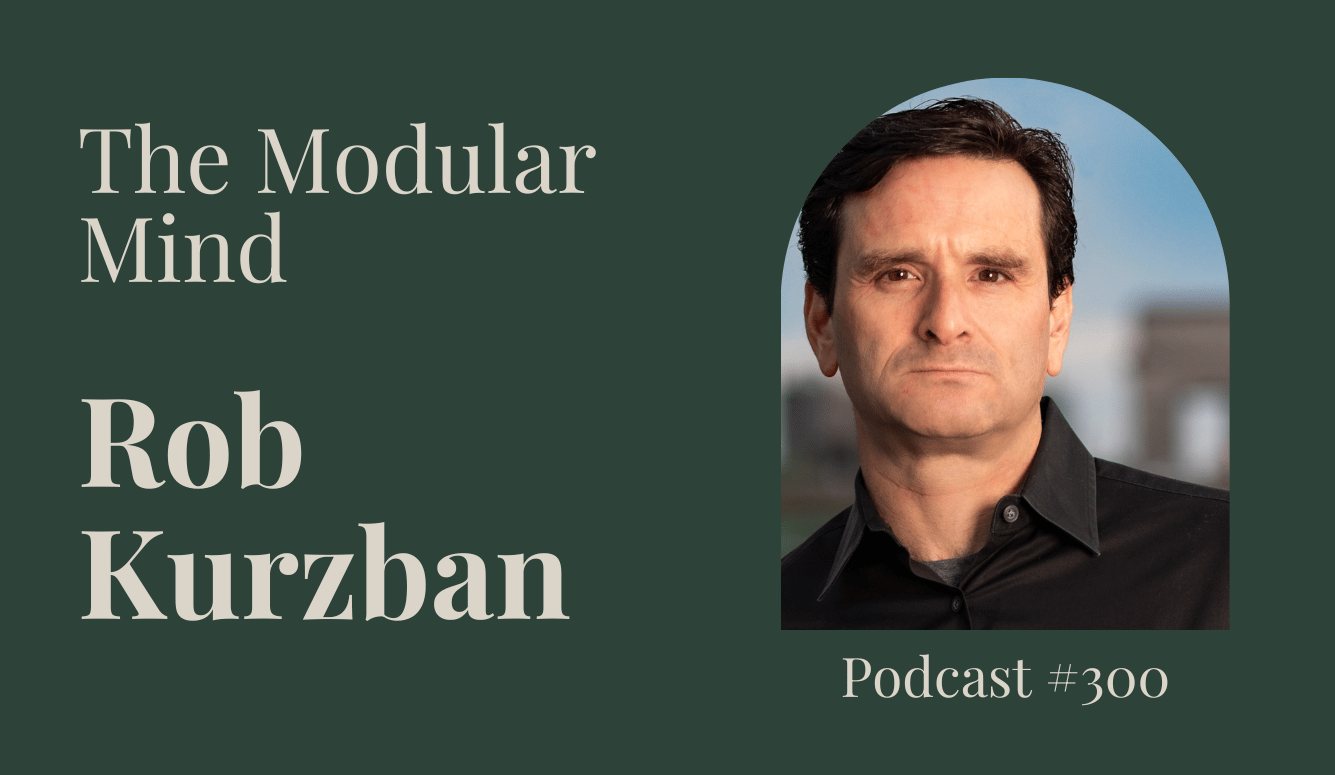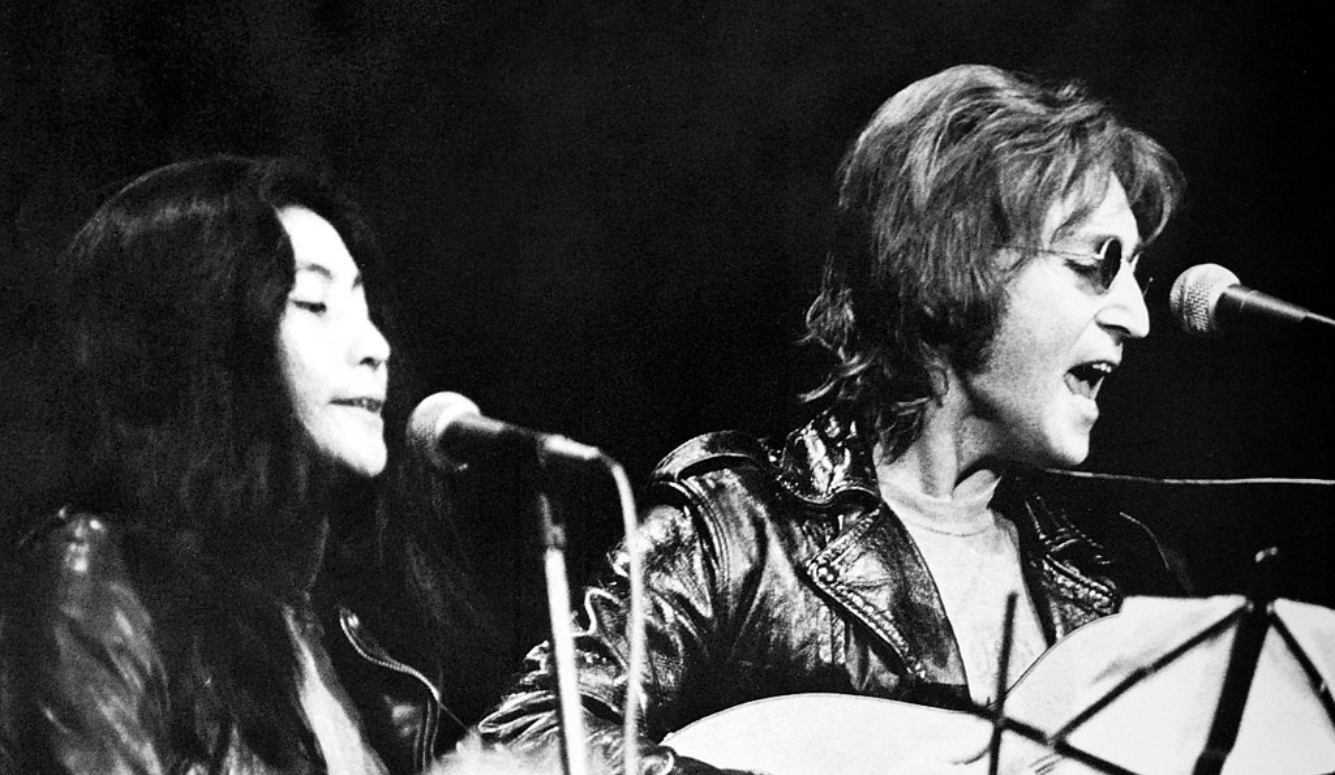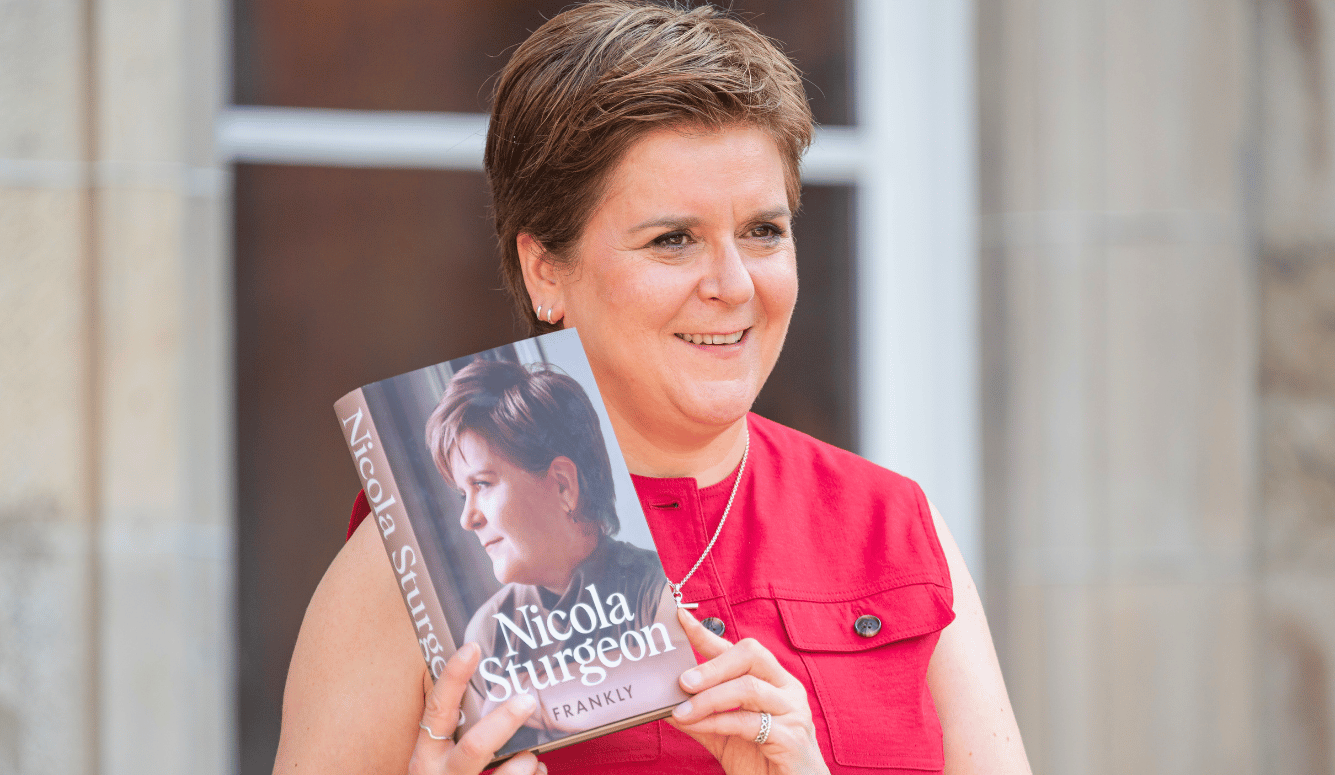Art and Culture
Art Is Not Therapy
Something is flattened when our understanding of art is asked to serve the logic of a medical diagnosis, which sees the messiness of the human condition as a malady to be cured.
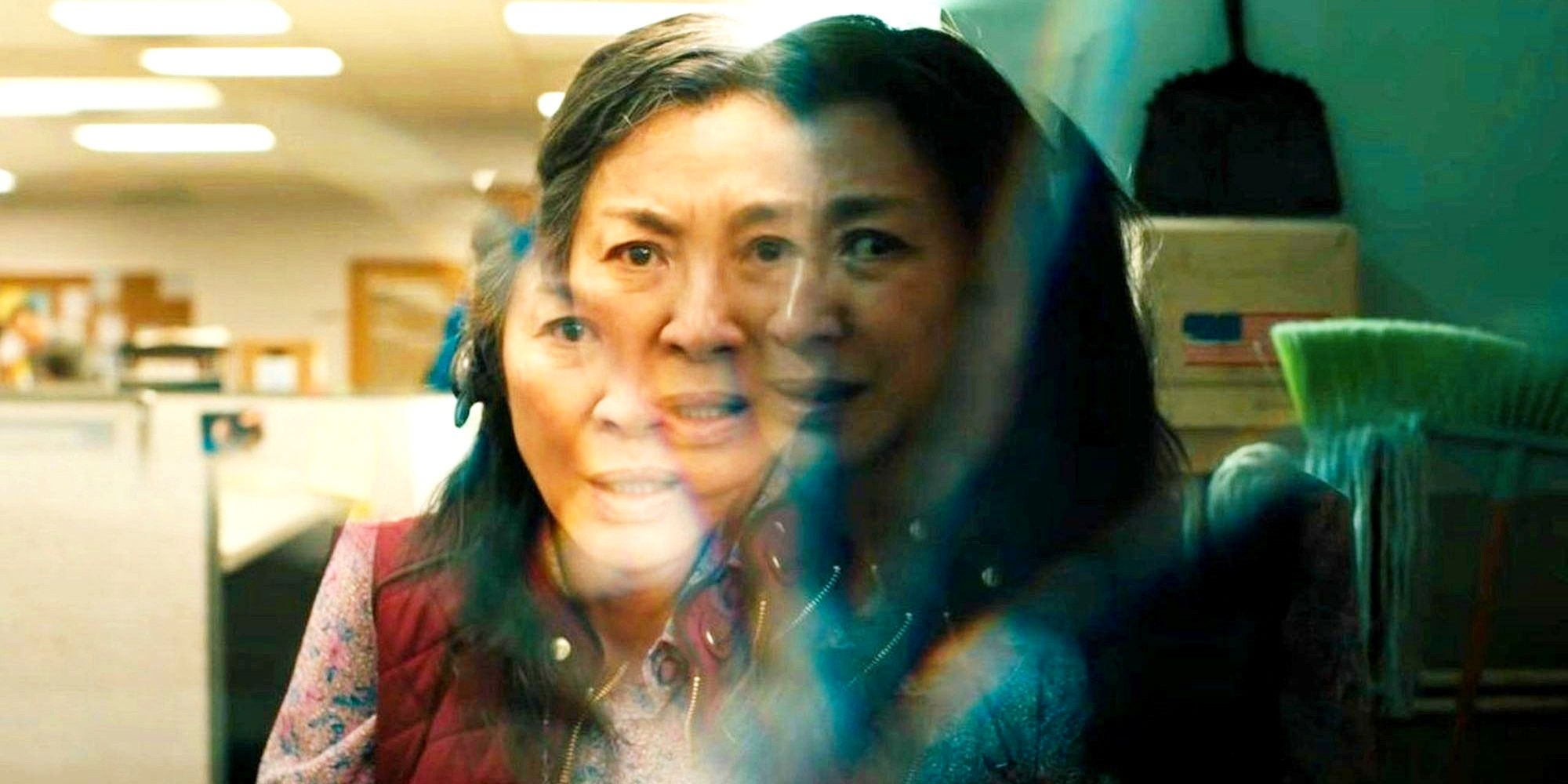
I have recently found myself pursued across the digital sphere by advertisements and acclaim for two new Hollywood films, Turning Red and Everything Everywhere All at Once. These films differ in many respects—the first is a Pixar animation for children, while the second offers a live-action, multiverse-spanning twist on the superhero film—but both revolve around the relationship between a female Chinese immigrant and her daughter. Algorithms have determined that, because I am a Chinese-American millennial who grew up with parental expectations of high achievement, and because I have recently become a mother, these movies were made for me—or at least for my algorithmic shadow self, a purely demographic entity. (Like Turning Red’s protagonist, I was a Tamagotchi-playing tween girl when the Twin Towers fell.)
And yet, much of the praise lavished on these films carried a puzzling assumption—that as an Asian-American woman, daughter, and mother, I would find them not just relatable, but also therapeutic. A headline in Canadian entertainment magazine Exclaim! announced that “‘Turning Red’ Is Fun for Tweens and Therapy for Adults,” while the New York Times promised to explain “How ‘Everything Everywhere All at Once’ Helps to Heal Generational Trauma.” Satisfied viewers echoed these sentiments, rhapsodizing that Turning Red “helped to process my trauma,” or joking about the comparative efficacy of “$150 therapy session or 5 screenings of everything everywhere all at once.” A prevailing spirit of eager solutionism holds that films can mend trauma, teach effective coping mechanisms, and precipitate healing.
“Intergenerational trauma,” admirers of both films maintain, is an under-represented issue affecting Asian-Americans. Initially defined as the process by which survivors of genocidal catastrophes like the Holocaust or the Atlantic slave trade could pass traumatic experiences on to their children, the meaning of intergenerational trauma has lately been expanded to include Phillip Larkin’s observation: “They fuck you up, your mum and dad./They may not mean to, but they do.”
Turning Red tells the story of a teenage girl, Mei, who transforms into a giant red panda whenever she becomes too excited. Mei’s panda form lends itself to therapeutic allegory—a curse inherited from her mother’s side, the panda represents the suppressed and compartmentalized emotions that the young protagonist must learn to embrace. Reviewers enthuse that Turning Red is “good for your mental health” and will make those living with anxiety “feel seen.” In a YouTube video that has already attracted more than 80,000 views, a therapist in fluffy fox ears explains how the film explores “enmeshment” and “parentification.”
In Everything Everywhere All at Once, the protagonist Evelyn leaps across a multiverse in pursuit of the nihilistic alter ego of her teenage daughter, whose sexuality Evelyn does not accept. Creators Dan Kwan and Daniel Scheinert—collectively known as “the Daniels”—have a history of interest in mental wellness; their first film, Swiss Army Man employed a farting corpse as a surrealist metaphor for depression. On Twitter, the Daniels have said that Everything Everywhere is intended to “bridge the generational gap that often crumbles into generational trauma”:
— Daniel Kwan (@dunkwun) April 8, 2022
Such attitudes are examples of a prevailing belief that art and entertainment should perform some kind of therapeutic function. America’s ongoing mental health crisis has arguably been exacerbated by the COVID-19 pandemic, so it’s tempting to frame art as part of the solution. No doubt, creating and consuming stories can provide therapeutic relief from the difficulties we encounter in our lives, and mental illness has long been fertile ground for storytelling. But such a narrow framework excludes the countless other ways that fiction can illuminate the complexities of human experience. Instead, it imposes the restrictive orthodoxies of mental wellness discourse on art—an impoverishing process in which journalists and critics are happy to be instrumental. Unlike the “trauma plot,” Parul Sehgal’s coinage for the use of trauma as narrative payoff, the therapeutic plot doesn’t wallow in trauma itself. Instead, it offers formulaic accounts of diagnosis and healing—what Janet Malcolm has called “the streamlined truisms of the age of mental health.”
Popular culture discourse today is replete with the mental wellness industry’s interventions. Film and culture reviewers cite the opinions of psychiatric professionals, while libraries curate fiction shelves that deal with mental health issues. Meanwhile, mental health depiction workshops, sensitivity readers, and toolkits have mushroomed, ostensibly to help artists fashion tactful and socially responsible stories. Consider, for example, the Mental Health Media Guide, an initiative developed by MTV Entertainment Group, which offers “best practices and evidence-based recommendations” for expanding “positive mental health portrayals” and avoiding depictions that could “embrace negative behaviors.” A jumbled list of “Difficult or Traumatic Experiences” has been assembled without an organizing principle: relationship problems, death and grief, police violence, social media, and COVID-19 are all thrown together under the same conceptual umbrella, along with nuggets of insight such as “most people are impacted emotionally by natural disaster,” and “losing a loved one has an understandable impact on mental health.”
“Impact”—a nebulous piece of corporate jargon—is the guide’s highest value. There’s something revealingly ironic about a document as dry and dull as this one instructing writers (or “content creators”) to “consider the impact of language.” Most of its advice is so general as to be functionally useless. Scrolling through the document, I tried to imagine who might find it helpful, but I was only able to picture a robot that lacks any understanding of actual human experience. It’s tempting to dismiss these industry efforts as perfunctory and platitudinal. But films like Turning Red and Everything Everywhere demonstrate the extent to which the mental wellness industry has bled into the creative domains.
Changed, too, is how casual audiences engage with media. In the course on unrequited love that I teach at UVA, my freshmen students dismiss tragic romances as “toxic,” and suggest that characters like Goethe’s suicidal Young Werther “go to therapy.” Book blogs sort recommendations by pathology (severe social anxiety, schizophrenia, body dysmorphia), symptom (anxiety, panic attacks), and trauma (parental suicide, psychiatric stay). Fans diagnose characters with mental disorders (a fan theory diagnoses the character Bruno from another recent Pixar offering, Encanto, with obsessive compulsive disorder). Self-diagnosis even informed the development of Everything Everywhere. In early drafts of the script, Evelyn suffered from undiagnosed attention deficit hyperactivity disorder. Writing and researching her character inspired Kwan to identify and seek treatment for his own heretofore undiagnosed ADHD.
No doubt, such a medical diagnosis can provide relief and resolution. But is such a diagnosis the job of art? What is lost when audiences and creators eschew other ways of discussing fiction (for example, E.M. Forster’s distinction between round and flat characters) and instead reduce characters to clinical profiles? In her New Yorker essay, “The Case Against the Trauma Plot,” Sehgal observes that post-traumatic stress disorder has 636,120 possible symptom combinations in the DSM-V, meaning that “636,120 people could conceivably have a unique set of symptoms and the same diagnosis.” ADHD boasts a modest 116,200. What does it mean to tell the story of a character with ADHD, which according to its own medical definition, has 116,200 possible presentations? Something is flattened when our understanding of art is asked to serve the logic of a medical diagnosis, which sees the messiness of the human condition as a malady to be cured.
Consider recent attempts to amend Shel Silverstein’s classic 1964 children’s book The Giving Tree, the tale of a tree and a young boy. As the boy grows, the tree gives more of herself to the boy: her apples, her branches, her trunk. At the end, the tree, now a stump, gives one last time to the boy, now a man, by providing him with a place to rest. The tree, we are told, is happy. There’s something existentially disturbing about this spare tale of self-abnegation, in which the tree gives and the boy takes. Marking the book’s 50th anniversary for the New Yorker in 2014, Ruth Margalit describes the story as “sadder than I remembered,” while a 2020 article for the New York Times announces that “We Need to Talk About the Giving Tree” and acknowledge that “there’s a big difference between selflessness and generosity.” Such articles convey the betrayal of adults revisiting a childhood favorite, which the New York Times columnists argue, offers an unhealthy valorization of self-sacrifice—a risk factor, they say, for “burnout and declining productivity.” The female tree, we are told, also replicates a troubling gender dynamic. “Imagine,” the writers conclude, “that the boy were not so selfish and the tree not so selfless. … Imagine the kind of lesson it would be.”
As it happens, no imagining is necessary, because the author, screenwriter, and playwright Topher Payne has “fixed” The Giving Tree for contemporary adult readers. (He also offers revised endings for other “problematic” children’s books.) The revised text is retitled The Tree Who Set Healthy Boundaries, and Payne has the tree interrupt the boy’s take-take-take with the words, “Okay, hold up. This is already getting out of hand” when he comes to her asking for a house. Her firm refusal is meant to teach the boy the importance of balancing generosity with a healthy regard for one’s own self-esteem, and the boy finds that he “loved his friend and was concerned about her long-term health because she had taught him the importance of empathy.” The Tree Who Set Healthy Boundaries closes with a redundant and rather smug lesson: “Setting healthy boundaries is a very important part of giving.” There’s nothing wrong with this lesson per se, besides its banality: you can’t set yourself on fire to keep someone else warm.
But Payne’s parodic vandalism doesn’t produce much of a story—perhaps because it was designed to elicit the approval of moralizing adults and not to excite the imaginations of children. Compared to the original Giving Tree, Payne’s anodyne revisionism inspires no sense of unease. In fact, it leaves no impression at all besides faint annoyance. Contrary to the urgent tone of recent revisionism (“we need to talk”), discomfort has haunted The Giving Tree since its initial publication. A bemused public, seeking relief from the story’s cruelty and ambivalence, hounded Silverstein for an explanation like Job beseeching an indifferent God—to which Silverstein would repeat, “It’s just a relationship between two people; one gives and the other takes.” Nowhere does Silverstein imply that the tree is noble, good, imitable; she is simply described as “happy.”
The sadness of The Giving Tree is interwoven with its profound truths—youth can be cruel, age diminishing, and love as transformative as it is self-destructive. I’ve seen love like that from people—most of whom, it must be said, were women—who loved their children with self-annihilating ferocity, and I’ve seen (and exhibited) the kind of callow apathy with which such devotion can be met. The Tree Who Set Healthy Boundaries replaces this familiar and familial human truth with a characterless, hypothetical relationship in which the tree and the boy are just “friends.” Perhaps what animates the biblioclastic instinct animating Payne and the book’s other critics isn’t concern for impressionable children, but rather the boy’s shameful reflection of our past selves. He represents the selfishness and ingratitude of all youth, heedless of the slow but inevitable fade of their mothers’ mortal presence.
Everything Everywhere’s co-director Kwan describes his ADHD diagnosis as a “beautiful, cathartic experience” that helped him to realize why “life is so hard.” The film is also his “cathartic expression” of this realization. When speaking about their films, the Daniels make liberal use of words like “miracle,” “epic,” “overwhelming,” and other terms of ambiguous rhapsody, but they are particularly fond of evoking catharsis. Kwan describes a scene from Swiss Army Man as “a beautiful and cathartic moment,” and a deleted scene from Everything Everywhere as “very cathartic and beautiful.” Contemporary mental wellness discourse converges frequently on that word, but its overuse merely substitutes profound truths with the blandness of positive thinking.
In ancient Athenian tragedy, catharsis was defined by Aristotle’s Poetics as the ritual purification and purgation of emotions, particularly pity and fear. Pity arises from identification with the tragic hero, whose nobility is compromised by a fatal flaw, and fear is elicited by his excessive punishment. The therapeutic significance of catharsis originated much later in the theories of Sigmund Freud. By applying Joseph Breuer’s “cathartic method,” Freud theorized that hypnosis allowed patients to recall the traumatic experience at the root of their condition. Catharsis was Freud’s first major breakthrough, and his first brush with the powers of the unconscious that would form the underpinnings of psychoanalytic theory.
For Aristotle, catharsis was the result of anagnorisis—the humility produced by the tragic hero’s recognition not only of the calamity that had befallen him, but also of his own role in bringing it about. Freud, meanwhile, described an inherent tragedy in the “impossible profession” of psychoanalysis, “in which one can be sure beforehand of achieving unsatisfying results.” It wasn’t that Freud had no faith in his own methods; he simply perceived the enormity of the human condition, and understood that the odds of success were not stacked in the psychoanalyst’s favor.
Humility is absent from today’s therapeutic catharsis, which assumes with algorithmic certainty that sharing will lead to understanding, and that understanding will lead to healing. Art’s role, according to Everything Everywhere actress Stephanie Hsu, is “to hold space for trauma and offer catharsis,” and to recognize that “empathy and radical empathy and radical kindness are also a tool.” Buried beneath this gauzy language is the fact that the “empathy” of Turning Red and Everything Everywhere rely on the transformation of the mothers, not their children. The adults must learn that children are individuals rather than extensions of parental will, and when empathy is granted to mothers, it is only through their shared status as victims.
Do films like Everything Everywhere actually heal generational divides, or do they just give grown-up millennials what they want to hear? Amid the meaninglessly gushy media language, “cathartic” can lapse tellingly into “validating.” At Hollywood Insider, Micha Jones argues that Turning Red and Everything Everywhere are part of a new genre of “immensely validating” family film. Others recount tearful immigrant mother-daughter film outings; Hsu took her mother to the LA premiere where she wept in identification with Evelyn, while Buzzfeed’s Scaachi Koul revealed that “I Made My Mom See ‘Everything Everywhere All At Once’ and We Both Cried.”
And yet, beneath all this lachrymose familial bonding, one detects a passive-aggressive need to have the last word. Koul, for example, concludes her viewing by interrogating her mother about the film’s message and her own experience of trauma. (Pity the immigrant women who fled war-torn nations and corrupt regimes only to be subjected to psychoanalysis from hipster filmmakers and their own children.) Koul tries and fails to spark in her mother the revelation that “she had been owed better treatment … and that maybe, in turn, she owed me something better too.” Doesn’t “catharsis” here more closely resemble the universally petulant teenage revenge fantasy, in which our mothers are finally forced to reckon with the ways in which they have wronged us? (As Koul recalls her mother’s mounting frustration, she admits: “She started to cry, which I took some perverse pleasure in.”)
All this is not to say that storytelling holds no empathic power, nor an ability to transcend individual perspectives. But this power lies in art’s ability to overthrow, not reify, easy solutions—to challenge rather than “validate.” The transmission of suffering from one generation to the next is a worthy subject for art, but not because its effect on any particular demographic has been under-represented. It is a worthy theme because it is timeless. At least since Sophocles’s Oedipus cycle, art has explored the ways in which a parent’s curse can become the inheritance of their children. What does the framing of “healing intergenerational trauma” do but particularize the universal and, in doing so, diminish art’s true potency?
At its best, art can acknowledge the universally tragic nature of life, which defies simple logic. Our approach to culture should account for rigor and complexity, not defer to trite solutionism. Creators, critics, and audiences must refuse rather than absorb the frictionless language and myopic scope of contemporary mental wellness. We should recall catharsis in its fullest sense—the expurgation of pity and awe, the plumbing of the subconscious’s deepest recesses—to recover art’s value from the merely therapeutic.
